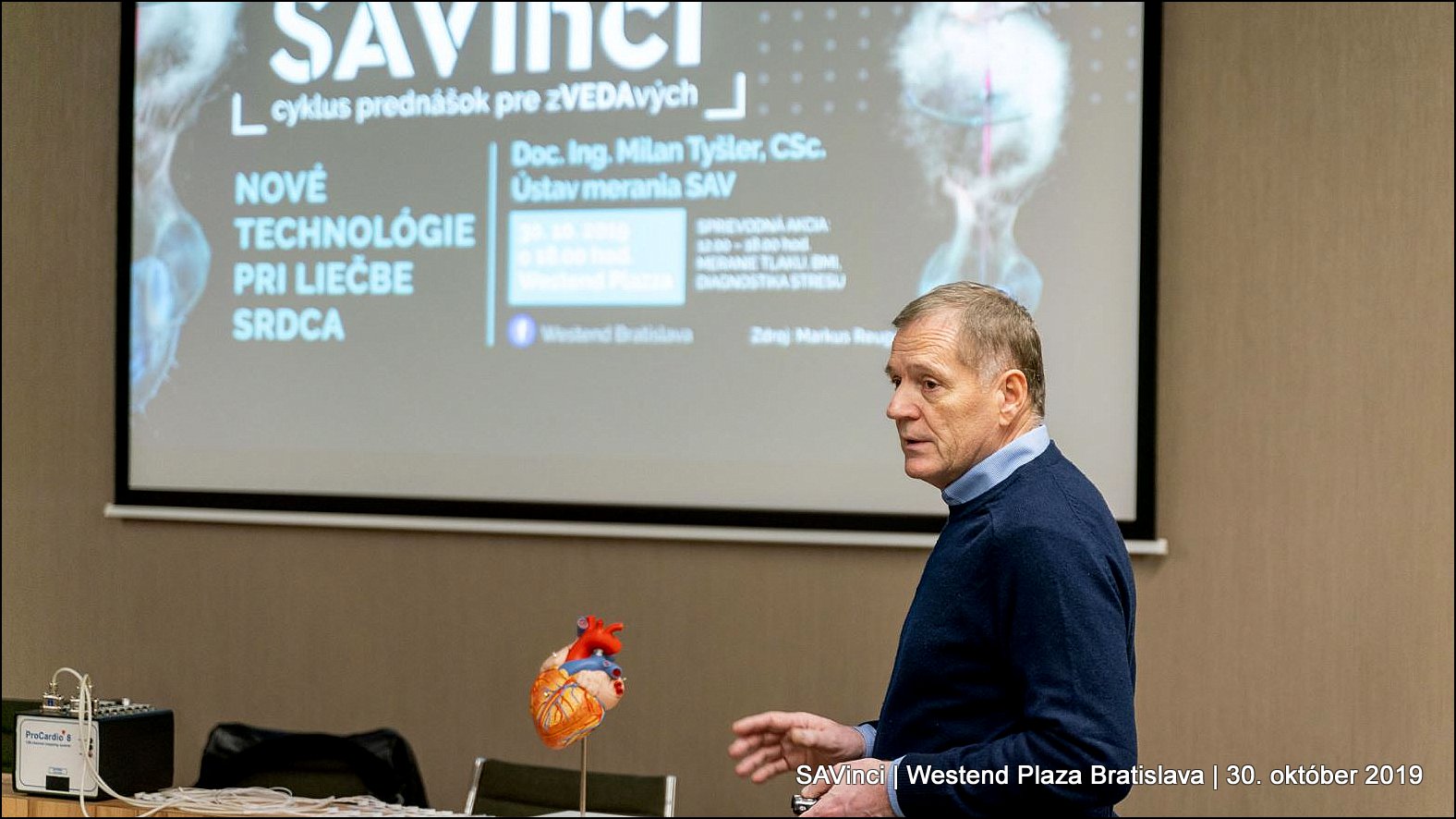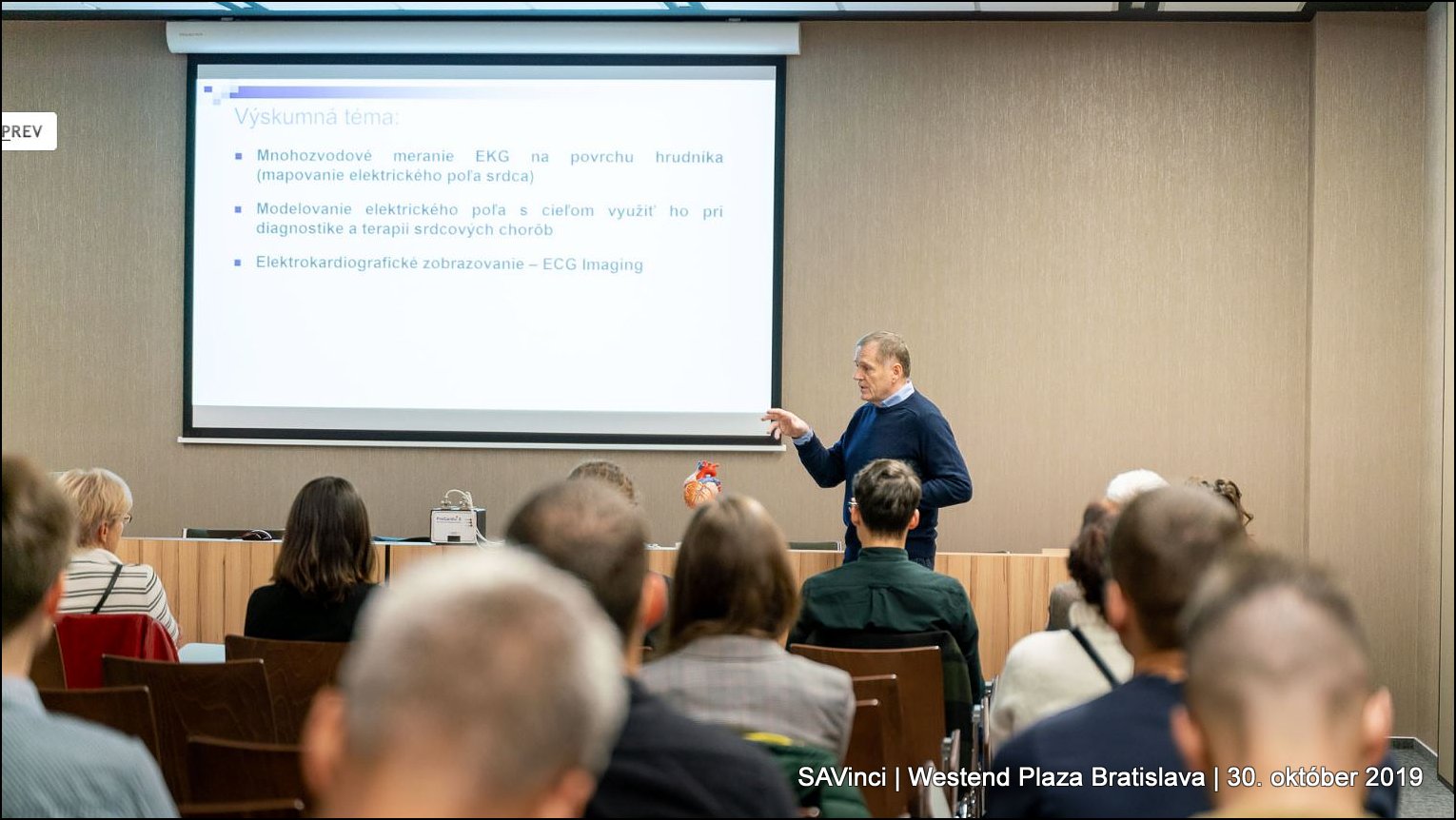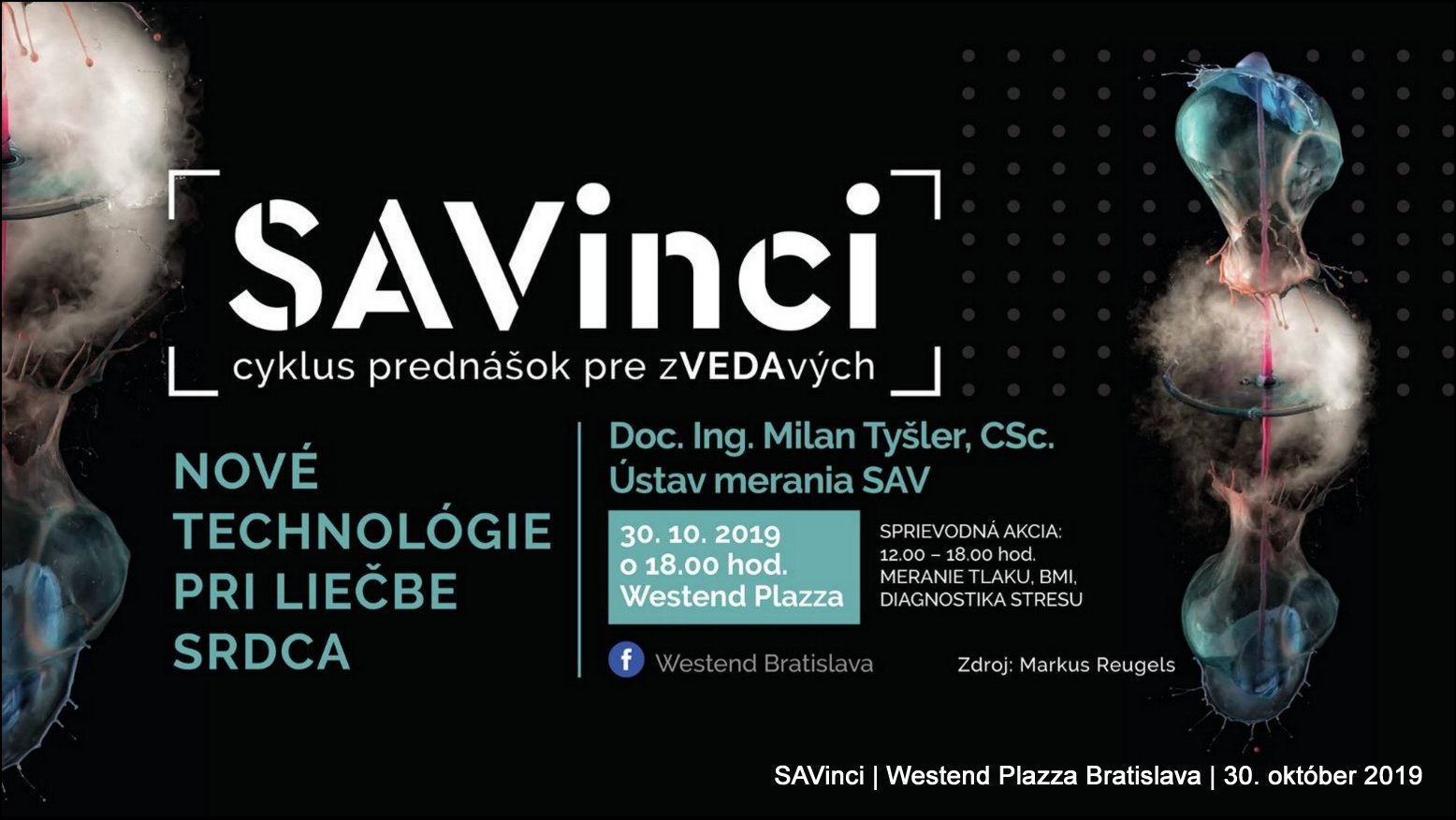SAVinci with Milan Tyšler on diagnostics and treatment of cardiac arrhythmias
On October 30, 2019, the new conference hall Westend Plazza in Bratislava held a lecture within the cycle SAVinci on the topic “New technologies in the treatment of heart” presented by doc. Ing. Milan Tyšler, CSc., Scientific Secretary and Head of the Department of Biomeasurements from the Institute of Measurement Science SAS.
Ventricular arrhythmias are a fairly common heart complication that does not avoid young people and athletes and may lead to heart failure if left untreated. If pharmacological treatment is not collected, patients are indicated for catheter ablation to remove the tissue in which the arrhythmia develops. However, a successful intervention requires precise localization. Doc. Ing. Milan Tyšler in the lecture he presented methods that allow to identify non-invasively precisely where the problematic tissue is located in the heart before the procedure.
More information about the lecture doc. Ing. Milan Tyšler, CSc. can be found in the report of Mrs. Andrea Nozdrovická on the SAS News page:
Although “the heart is just a muscle,” our life depends on its performance. And because it is “just” muscle, it will not avoid damage or disorders. Arrhythmia is one of them. Doc. Ing. Milan Tyšler, CSc., Head of the Department of Biomeasurement of the Institute of Measurement Science SAS, spoke about the diagnosis and treatment of cardiac arrhythmias and, in particular, how new technologies can help in them, in the scientific café SAVinci in the congress hall Westend Plazza in Bratislava.
Listening to doctors as they reach the damaged heart, as scientists explore non-invasive diagnosis options, as they try out unimaginable things together a few years ago, you inadvertently feel your heart and (maybe) your heart rate will rise. And this is quite important for monitoring arrhythmias. Its irregularity may be a sign of arrhythmia. However, Milan Tyšler points out: “All of us may have arrhythmias and they may not feel them, the problem is if they become frequent and lead to a deterioration in the pumping activity of the heart.”
Ventricular arrhythmias, diagnosed by M. Tyšler, present ventricular extrasystoles (premature systoles) and failure to treat them may lead to heart failure or ventricular fibrillation, which is a rapid and uncoordinated contraction. In other words – not a healthy state. The causes of extrasystole can be multiple – from stress, drugs, ischemia to ion channel disorders on cell membranes. If the pharmacological treatment does not work, this condition requires surgical treatment – introduction of a catheter and ablation, that is, anesthetic of the tissue in which the arrhythmia occurs. “It is very important to determine where the catheter should be introduced,” M. Tyšler comes to motivate his research. It deals with non-invasive localization of ventricular arrhythmias, using multi-lead ECG measurement. In layman’s terms, M. Tyšler and his team try to locate the bearing, the place of the source of arrhythmias in the heart, before the surgery without invasive intervention into the patient’s body. “The method requires surface ECG mapping, heart and chest geometry information obtained from CT (computed tomography) or MR (magnetic resonance imaging) and computer modeling of the electric field of the heart and its source,” the scientist explains. As a result, a dipole source is generated that generates the same ECG map as initially measured in the patient. The method has so far been verified in a group of several dozen patients in Prague and Bratislava. The results show that the arrhythmia source localization error is generally less than 20 mm, but the research is not yet complete and the research team endeavors to further improve this method.
Milan Tyšler is optimistic about scientific progress, but what better to prevent heart disease?
Andrea Nozdrovická
© Photo: Matej Fabiánek




 Contacts
Contacts Intranet
Intranet SK
SK